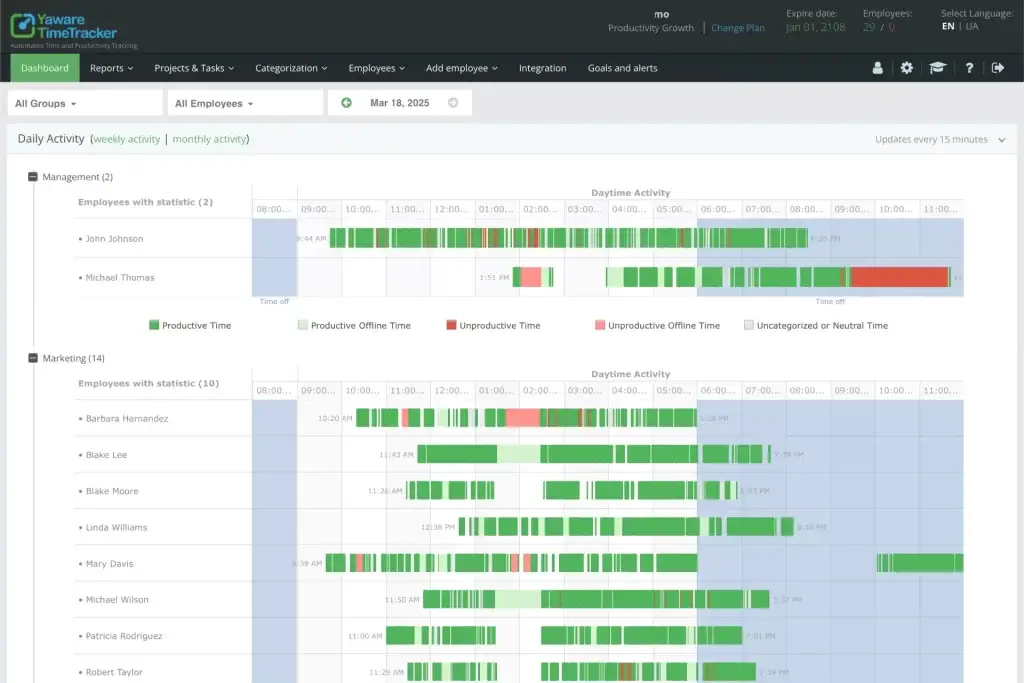Most companies approach time tracking as a simple administrative necessity, missing massive opportunities for strategic business transformation. Organizations implementing comprehensive time tracking systems achieve 40% higher ROI compared to companies using basic timekeeping methods. Research by McKinsey & Company confirms that the difference lies in treating time data as a strategic asset rather than mere compliance requirement.
Critical Implementation Mistakes That Cost Companies Millions
Traditional time tracking deployments fail because leadership focuses on monitoring rather than optimization. Companies invest heavily in sophisticated platforms but configure them like digital punch clocks, collecting data without extracting actionable business insights. This monitoring-first approach creates employee resistance while delivering minimal business value.
The most expensive mistake involves implementing time tracking without clear success metrics. Organizations spend months configuring systems but never define what constitutes implementation success. Without baseline measurements, companies cannot quantify improvements or justify continued investment in workforce analytics initiatives.
Another costly error occurs when businesses treat all employees identically during rollout. Different roles require different tracking approaches – sales teams need project-based tracking while developers benefit from task-level granularity. One-size-fits-all implementations typically achieve 60% lower adoption rates and deliver substantially reduced business impact.
Strategic Implementation Framework for Maximum ROI
Companies achieving superior returns follow systematic implementation approaches that prioritize business outcomes over administrative convenience. The framework focuses on progressive deployment with measurable milestones and continuous optimization based on actual usage patterns and business results achieved.
Successful implementations follow these strategic phases:
- Business case development with specific ROI targets based on current inefficiencies and improvement opportunities
- Pilot program execution with high-impact teams to validate assumptions and refine processes before company-wide rollout
- Integration with existing business systems including project management, billing, and performance management platforms
- Advanced analytics deployment for predictive insights and automated reporting capabilities
- Continuous optimization protocols based on usage data and business outcome measurements
These phases ensure systematic value delivery while maintaining employee engagement throughout the transformation process.
Department-Specific Customization Strategies
Different business functions require tailored time tracking configurations to maximize adoption and business value. Generic approaches consistently fail because they ignore fundamental differences in how various teams create value and measure success within their operational contexts.
Essential customization approaches by department type:
- Professional services firms optimize for billable hour accuracy and transparent client reporting
- Manufacturing operations focus on production efficiency metrics and resource allocation optimization
- Creative agencies prioritize project profitability analysis and team capacity planning capabilities
- Software development teams require integration with development tools and sprint planning systems
- Sales organizations need territory management tracking and client interaction analytics
The customization extends beyond feature configuration to include workflow integration, reporting structures, and performance metrics alignment. Teams achieve 75% higher adoption rates when time tracking enhances existing processes rather than adding administrative burden to daily operations.
Time Tracking ROI Measurement Through Advanced Analytics
ROI measurement requires sophisticated analytics that connect time data with concrete business outcomes. Basic reporting shows hours worked while advanced time tracking analytics reveal productivity patterns, resource optimization opportunities, and predictive insights for strategic planning initiatives.

Leading companies track correlations between time allocation changes and revenue growth, project profitability improvements, and client satisfaction metrics. These connections demonstrate strategic value beyond simple hour counting and justify continued investment in workforce analytics capabilities for long-term competitive advantage.
Advanced time tracking implementations use predictive analytics to identify potential project overruns, resource constraints, and capacity planning opportunities before they impact business operations. This proactive approach prevents costly problems rather than simply documenting them after they occur.
Enterprise Case Study Results and Impact Analysis
A Fortune 500 consulting firm implemented strategic time tracking across 2,500 employees and achieved remarkable business transformation results. Project profitability visibility increased by 85%, enabling data-driven decisions about client engagement strategies and optimal resource allocation.
The firm discovered that 30% of project overruns resulted from inadequate initial scoping rather than execution problems. This insight led to process improvements that reduced overruns by 45% within six months. Client satisfaction scores improved by 25% due to enhanced project predictability and proactive communication.
Return on investment reached 340% within 18 months through multiple value streams including improved project profitability, reduced administrative costs, enhanced client relationships, and better strategic decision-making capabilities. The transformation positioned the firm for sustainable competitive advantage in an increasingly data-driven marketplace.
Strategic time tracking implementation transforms administrative necessity into sustainable competitive advantage. Companies achieving superior ROI focus on business outcomes rather than simple hour counting, customize approaches for different team needs, and leverage advanced analytics for continuous improvement. The investment delivers measurable returns through improved profitability, enhanced client relationships, and strategic decision-making capabilities that drive long-term business growth.

